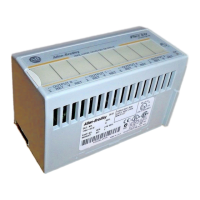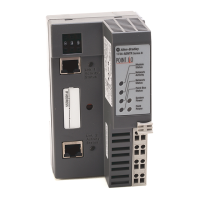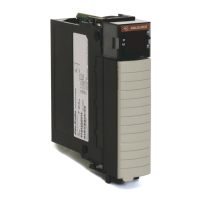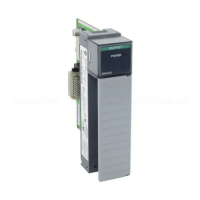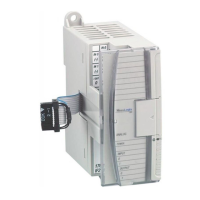Addressing Modes for Your Remote I/O
Chapter 3
3-10
Follow these guidelines when configuring your remote system with
complementary I/O chassis:
Assign the complementary I/O rack number to a chassis of equal or
smaller size than the primary chassis.
If the complementary chassis is smaller than the primary one, set the last
chassis switch on the complementary chassis to the ON position, unless
the adapter is in the faulted I/O search mode.
For PLC-2 family processors:
Connect the complementary chassis to the same scanner channel as
the primary chassis.
Connect the complementary chassis to the remote trunkline as
though they were additional primary chassis.
For PLC-3 processors, connect the complementary chassis to a
different scanner channel as the primary chassis.
Assign the same beginning I/O group number to both I/O racks.
You cannot configure complementary I/O in a chassis that uses a
combination of 2-slot addressing and 16-point I/O.
You cannot use 32-point I/O modules in a complementary I/O
configuration when you select 2-slot or 1-slot addressing.
You can place an output module opposite another output module;
they reflect the same bits in the output image table.
Do not place an input module opposite an input module.
You can use the following modules in either primary or complementary I/O
chassis opposite any type of module:
Catalog Number Description
1771E1, E2, E3 Analog Input Expander Assembly
1771E4 Analog Output Expander Assembly
1771IY Thermocouple Input Expander Module Assembly
1771ES Servo (Encoder Feedback) Expander Assembly
1771KA2 Communication Adapter Module
1771KE Communication Controller Module
1771KG PLC2 Family/RS232C Interface Module
1771OJ Pulse Output Expander Assembly
1771AF Fiber Optics Converter Module

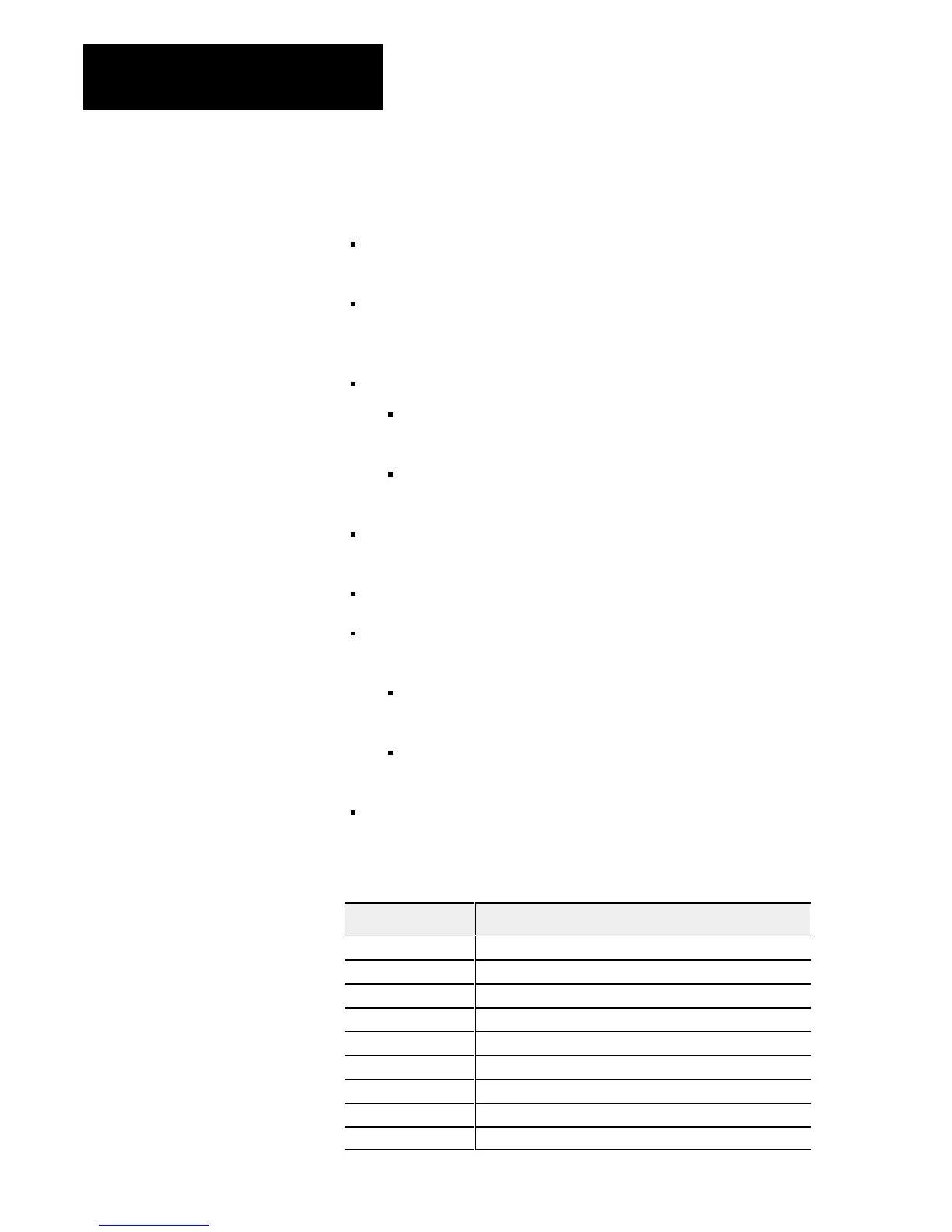